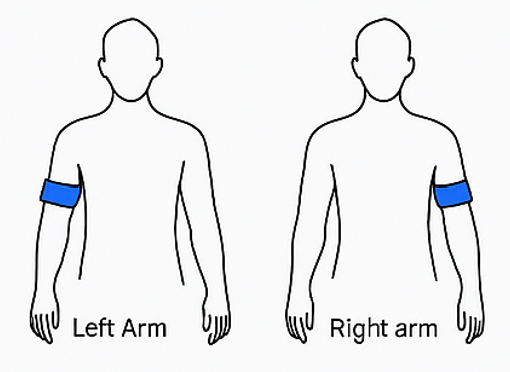Create Your First Project
Start adding your projects to your portfolio. Click on "Manage Projects" to get started
Project Title
Project Type
Photography
Date
April 2023
This is where the project description goes. Give an overview or go in depth - what it’s all about, what inspired you, how you created it, or anything else you’d like visitors to know. To add Project descriptions, go to Manage Projects.
🎯 Challenge
Consumers rely on wearables to track performance and recovery — but are those readings accurate during dynamic, intermittent sports? The challenge was to validate whether wrist-based devices could deliver reliable heart rate and energy expenditure data under sport-specific movement demands. Our job was to identify blind spots in accuracy, potential UX risks, and limitations in sensor design or placement.
🎯 UX Research Goals
-
Evaluate validity of specific metrics estimation features in 4 popular wearables
-
Assess reliability of repeated measurements during identical activities.
-
Identify inconsistencies based on device placement (e.g., dominant vs. non-dominant hand).
-
Provide actionable insights on device performance to influence future design and development
🔬 Research Methodology
This project involved the use of mixed methodologies
A/B Testing Conditions:
To examine the influence of device placement on output, we performed A/B testing with wearables worn on the left vs. right arm in repeated trials. This controlled for side-dominance, motion artifacts, and contact variability.
-
Devices were worn on both dominant and non-dominant arms across trials
-
Sensor data was collected during circuit
-
Quantitative measures were taken
Supplemental Intercepts:
To layer in contextual UX insights, we conducted short intercepts with test participants after each trial to capture:
-
Real-time trust in device readings
-
Confusion or usability concerns
-
Preferences in sensor placement and feedback accuracy
Intercept Interviews: Users shared experiences of device accuracy during testing and perceived usefulness of the data.
Key Insights
-
All four devices demonstrated high validity and reliability for metric detection across placements.
-
Energy Expenditure:
-
Only one device was both valid and reliable.
-
One was reliable but systematically overestimated.
-
Two devices produced inconsistent and invalid data, particularly on the non-dominant arm.
-
-
A/B Placement:
-
Devices showed notable variation in calorie estimates depending on which arm they were worn on, suggesting sensor calibration and motion sensitivity differed between units.
-
-
User Trust: In intercepts, users reported low confidence in devices with conflicting data across arms or sessions, raising concerns about perceived data integrity.
Key UX Insights
-
Two devices overestimated metrics 20–35% in most cases — leading to potential user frustration or overtraining if used for recovery tracking.
-
Dominant wrist placement improved metric accuracy on certain devices
-
Participants expected seamless consistency between readings from both arms — and were confused by fluctuations between device outputs
-
Several users mistrusted data entirely when their effort perception didn’t match the readout. This was noted as a future UX concern around user feedback loops and belief in the product.
🛠 Solution & Recommendations
We delivered a comprehensive report with:
-
Sensor placement diagrams showing accuracy thresholds
-
Visualizations of discrepancies over time
-
UX flags for product teams to consider in algorithm refinement and onboarding content
-
Design insights to support clearer user expectations for different sports contexts
🎯 Deliverables
-
Raw data exports + coded usability intercepts
-
Sensor diagram + device heatmaps
-
Executive summary for product & marketing
Impact on UX Research
This study underscored the value of early-stage field testing and usability-focused validation in hardware UX. It highlighted how data discrepancies—especially from body placement—can erode user trust and lead to misinformed training or health decisions. As a UX researcher, this reinforced the importance of building inclusive testing protocols that mirror how products are used in the real world.

Partial device set-up
